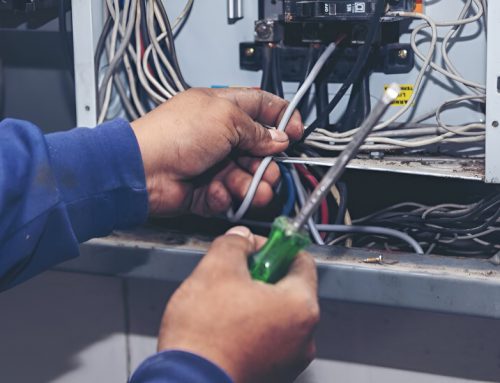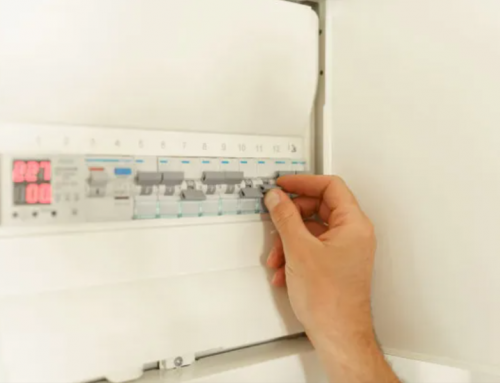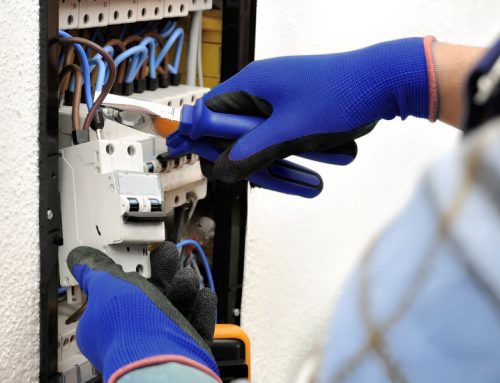How to Test a Circuit Breaker with a Multimeter?
1.Introduction.
This article will explore the basic concepts of circuit breakers, introduce a multimeter, and explain why it is necessary to test circuit breakers. At the same time, we will explore how to use a multimeter to test circuit breakers and analyze the precautions that need to be taken during the testing process. We will also provide step-by-step guidance and use practical cases for analysis and discussion to help readers better understand how to use a multimeter to test circuit breakers.
2.Circuit breaker.
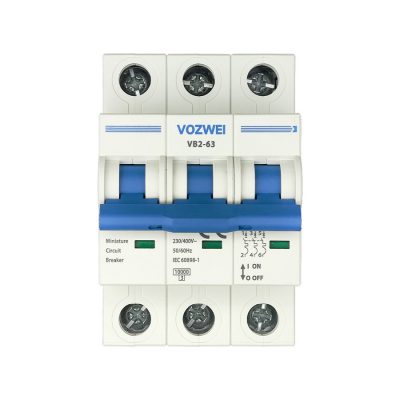
Q: What is a circuit breaker?
A: A circuit breaker is an electrical protection device used to detect and protect electrical equipment from abnormal conditions such as overload, short circuit, and ground fault in a circuit. It is an important component of the electrical system and plays a crucial role in ensuring the safety of personnel and equipment.
The basic principle of a circuit breaker is to protect electrical equipment by controlling the current in the circuit. Under normal circumstances, the current level in the circuit is stable. But when an abnormal situation occurs in the circuit, such as circuit overload, short circuit, or ground fault, the current will suddenly increase, which may cause damage to the equipment and even trigger a fire. The circuit breaker protects the equipment by quickly cutting off the circuit based on the current level and the time it exceeds the set value.
The circuit breaker has the following main functions:
(1). Overload protection: When the current in the circuit exceeds the rated value, the circuit breaker will automatically cut off the circuit to prevent equipment overheating and damage.
(2). Short circuit protection: When a short circuit fault occurs in a circuit, the circuit breaker can quickly cut off the circuit, eliminate short circuit current, and prevent the danger of equipment overload and arc generation.
(3). Ground wire protection: When a ground wire fault occurs in the circuit, the circuit breaker can immediately cut off the circuit to avoid electric shock accidents.
(4). Control circuit opening and closing: The circuit breaker can also be manually operated to achieve control and operation of electrical equipment.
Generally speaking, circuit breakers are composed of current sensing elements, triggering mechanisms, and cutting mechanisms. Among them, the current sensing element is used to detect current anomalies, the triggering mechanism is responsible for triggering the cut-off action when the set value is exceeded, and the cut-off mechanism is responsible for quickly cutting off the circuit.
Circuit breakers can be divided into low-voltage circuit breakers and high-voltage circuit breakers based on different application scenarios and protection objects. 1. Low voltage circuit breakers are commonly used in household, commercial, and industrial electrical systems to protect electrical equipment, wires, and cables. 2. High voltage circuit breakers are mainly used in transmission and distribution systems to protect equipment in substations and power systems.
When selecting and installing circuit breakers, it is necessary to consider parameters such as the rated current of the circuit, the rated current of the circuit breaker, and the outage capacity. At the same time, it is necessary to install and wire correctly according to relevant standards and specifications to ensure its reliable operation.
The normal operation of circuit breakers is crucial for the safety of electrical systems. Regularly inspect, test, and maintain circuit breakers to remove dust and carbon deposits and other pollutants to ensure their reliable operation. In addition, when using circuit breakers, corresponding operating procedures should be followed and attention should be paid to safe electricity use to prevent danger to personnel and equipment.
As an electrical protection device, circuit breakers not only protect the safety of personnel and equipment, but also play an important role in ensuring the stable operation of the electrical system. In electrical engineering, the correct selection, installation, and maintenance of circuit breakers is very important, which helps to improve the reliability and safety of the system.
Q: Why do I need to test the circuit breaker?
A: The purpose of testing circuit breakers is to ensure their normal operation in case of abnormal circuit conditions, ensuring the safety of personnel and equipment. The following are the reasons for testing circuit breakers:
(1). Accident prevention: In the event of an electrical fault, if the circuit breaker cannot cut off the circuit correctly, excessive current may cause dangerous events such as fire, equipment damage, or personal injury. Therefore, testing circuit breakers can prevent the occurrence of these accidents.
(2). Ensure normal protection function: The protection function of the circuit breaker is closely related to its cutting capacity. Regular testing can ensure the normal operation of its protective function, so as to cut off the circuit in a timely manner.
(3). Avoid excessive wear: If the circuit breaker is frequently in a high current state for a short period of time, its metal components may be excessively worn. This may result in the inability to cut off the circuit when needed, or accidental disconnection of the circuit when not needed.
(4). Compliance with relevant standards and specifications: Testing circuit breakers can ensure that they comply with relevant national or regional standards and specifications, ensuring their normal operation.
(5). Improve the reliability of equipment: Testing circuit breakers can detect potential faults, timely troubleshoot, improve equipment reliability and stability, and extend equipment life.
In summary, testing circuit breakers is crucial for ensuring the safety and stable operation of electrical systems. Regular inspection and testing of circuit breakers can reduce the probability of faults, improve system reliability, and better protect personnel and equipment.
3.Multimeter.
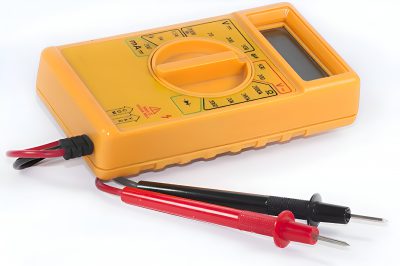
Q: What is a multimeter?
A: A multimeter is a portable measuring instrument widely used in the electronic and electrical fields, used to measure voltage, current, resistance, and other electrical characteristics. Its full name is a multimeter, also known as a multi-purpose meter, which is one of the commonly used tools for electronic engineers, electricians, and scientific laboratories.
A multimeter usually consists of a digital display screen, knob, test lead, and measurement gear. Its main function is to measure and monitor parameters in the circuit, which can be used for DC and AC measurement, and has additional functions such as automatic range selection, data retention, relative value measurement, etc.
The use of a multimeter is very convenient and easy to operate. Simply insert the test lead into the correct socket (with different warning pin colors), select the necessary functions and ranges for voltage, current, resistance measurement, etc., and complete the measurement by rotating the knob.
The main functions of a multimeter include the following aspects:
(1). Voltage measurement: The multimeter can measure DC voltage and AC voltage, and can automatically select the appropriate range based on the measurement range. For example, it can measure battery voltage, voltage signals in circuits, etc.
(2). Current measurement: A multimeter can measure DC and AC currents and automatically select the appropriate range based on the current value. By connecting a multimeter in series or parallel with a circuit, the current level in the circuit can be measured.
(3). Resistance measurement: A multimeter can measure the resistance value of components in a circuit. It can help detect open circuits, short circuits, or whether the resistance value in the circuit meets the requirements.
(4). Frequency measurement: Some models of multimeter can also measure the frequency in the circuit, which is very useful for frequency related measurements and experiments.
(5). Conversion function: Some advanced multimeters also have other functions, such as capacitance measurement, temperature measurement, decibel measurement, etc., which can be switched according to different needs.
Multimeters are widely used in fields such as electronic circuit maintenance, electrical installation, scientific experiments, and industrial automation. It can quickly and accurately measure circuit parameters, help users locate fault points, debug circuits, and ensure the normal operation of equipment and circuits. At the same time, when using a multimeter, it is also necessary to pay attention to safe operation, follow correct usage methods and relevant safety regulations, and ensure personal safety and equipment integrity.
4.Precautions for using a multimeter.
Precautions for using a multimeter to test circuit breakers:
(1). Disconnect the power supply and unload the load: Before conducting the test, the power supply should be disconnected first to avoid the risk of electric shock, and the load on the circuit breaker should be removed to avoid interference with the circuit.
(2). Select the appropriate testing gear: Select the appropriate testing gear for the multimeter based on the range of parameters to be tested. Generally, the smallest test gear is selected to obtain more accurate readings and prevent misoperation.
(3). Correct wiring: Pay attention to the correct wiring of the multimeter test wire. The test leads should be connected to the two endpoints of the electrical component and ensure that the pins match the corresponding slots.
(4). Charging before testing: During insulation testing, the voltage measurement function of a multimeter can be used to short circuit the test leads together before charging, in order to detect potential leakage situations.
(5). Observe the digital display: During testing, carefully observe the digital display of the multimeter and ensure that the test values are stable. At the same time, observe whether the test values are within the normal range.
(6). Appearance inspection: During the testing period, an appearance inspection of the circuit breaker can also be carried out to ensure that it is not cracked or damaged.
(7). Pay attention to safety: When conducting testing, it is necessary to pay attention to safe operations, such as wearing protective equipment such as insulated gloves and glasses, and following the user manual and electrical safety specifications of the multimeter.
In summary, when testing circuit breakers, it is necessary to select the appropriate gear, connect correctly, observe numerical stability, and pay attention to safety measures.
5.Test the circuit breaker with a multimeter.
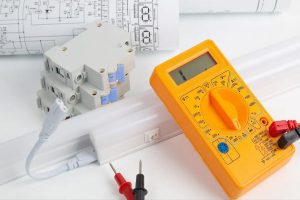
a. Preparation work.
Before conducting the test, we need to prepare the following tools and materials:
Multimeter; Insulated gloves; Insulated glasses; Circuit breaker
At the same time, to ensure the safety of testing, we need to pay attention to the following items:
Power outage: Before testing, please separate the circuit breaker from the power supply to avoid the risk of electric shock.
Personal protection: Wear personal protective equipment such as insulated gloves and insulated glasses to ensure safe operation.
b.External inspection of circuit breakers.
Before conducting the test, we need to inspect the appearance of the circuit breaker to ensure that there is no damage or abnormal situation. Firstly, we can inspect the surface of the circuit breaker for cracks or deformation, and check for any burning odor. If any issues are found, please immediately stop testing and replace the circuit breaker.
c.Preparation for connection of circuit breakers.
Before conducting the test, we need to disconnect the circuit breaker from the power supply and set it to the closed state. Then, we can use the measurement function of the multimeter to select the appropriate voltage range. Generally speaking, we can choose the smallest voltage range to obtain more accurate readings and prevent misoperation.
d. Test circuit breaker.
Before testing, we need to connect the two probes of the multimeter to the input and output terminals of the circuit breaker. Then, we can reconnect the power supply to the circuit breaker and turn it on. At this point, the multimeter will display the current value in the current circuit.
During the testing process, we need to observe the readings of the multimeter to determine the working status and performance of the circuit breaker. Generally speaking, the working status of circuit breakers can be judged based on the following indicators:
Normally closed circuit breaker (NO type): When the circuit breaker is closed, the reading of the multimeter should be zero (or very close to zero); When the circuit breaker is triggered, the reading of the multimeter should exceed the initial value.
Normally open circuit breaker (NC type): When the circuit breaker is closed, the reading of the multimeter should be normal; When the circuit breaker is triggered, the reading of the multimeter should become zero.
e. Result analysis and judgment.
After the testing is completed, we need to analyze and make judgments based on the test results. If the reading of the multimeter is normal, then the circuit breaker is normal. If the reading of the multimeter is abnormal, we need to further inspect and analyze the cause of the fault, and repair or replace it according to the specific situation.
In summary, when using a multimeter to test circuit breakers, we need to prepare necessary equipment and tools, and pay attention to the safe operation of the test. At the same time, we need to follow the correct steps for testing and observe the readings of the multimeter to determine the status and performance of the circuit breaker. If unsure how to conduct testing or encounter complex fault situations, please consult professionals with relevant experience in electrical engineering.
6.Case Study.
Case analysis:
A certain factory has installed a 3P160A circuit breaker, and it was found that the circuit breaker often trips during use, which affects the normal production of the factory. To solve this problem, the electrician decided to use a multimeter to test the circuit breaker.
Firstly, the electrician conducted an external inspection using a multimeter and found that there was no obvious damage or deformation on the surface of the circuit breaker. Then, the electrician cuts off the circuit breaker from the power supply and sets it to the closed state. Next, the electrician selects the appropriate voltage range and connects the two probes of the multimeter to the input and output terminals of the circuit breaker.
During the test, the multimeter showed a reading of 1.5A, but it suddenly tripped shortly after. The electrician conducted multiple tests and the results were all the same. After analysis, the electrician suspected that it was caused by a circuit breaker malfunction. So, the electrician decided to replace the circuit breaker.
After replacing the circuit breaker with a new one, the electrician used a multimeter again for testing, and the test result showed 0A, which meets the normal operating state. Subsequent operation confirmed that after replacing the circuit breaker, the factory’s production was running normally and there were no further circuit breaker trips.
Through this case study, we can find that testing circuit breakers with a multimeter is a very practical method that can quickly detect the status and performance of circuit breakers, identify fault points, and repair them. In the field of electrical engineering, we need to regularly inspect circuit breakers and conduct necessary testing and maintenance to ensure their normal operation and service life, protect electrical equipment and personnel safety.
Conclusion
This article introduces what a circuit breaker is, what a multimeter is, how to use a multimeter to test a circuit breaker, and emphasizes the importance of circuit breaker testing. Through multimeter testing, we can quickly detect the status and performance of circuit breakers, accurately identify fault points, and take appropriate repair measures. To ensure the safety of electrical equipment and personnel, we should conduct regular testing and maintenance of circuit breakers according to actual needs. Only by maintaining the normal operation and service life of the circuit breaker can we ensure the stable operation of the circuit and prevent accidents from occurring. If you encounter problems while using the circuit breaker, it is recommended to use a multimeter for testing in a timely manner, and seek professional assistance and guidance to ensure the safety and accuracy of the operation. Through correct circuit breaker testing and maintenance, we can improve the reliability and safety of the circuit and ensure the normal operation of the equipment.
References
Appendix
Circuit: The complete closed path through which a current can pass.

